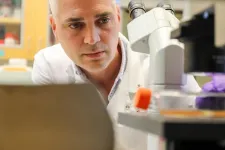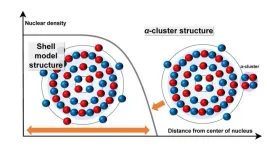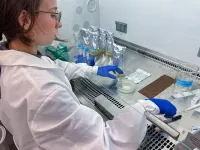(Press-News.org) When it comes to helping patients with high blood pressure get their hypertension under control, a new Tulane University study finds that pharmacists and community health workers have the best success rates.
The study, published in Circulation: Cardiovascular Quality and Outcomes, analyzed data from 100 hypertension trials around the world and compared blood pressure reductions by the type of healthcare professionals who led the interventions.
While interventions led by nurses, physicians and multiple healthcare professionals still significantly reduced blood pressure for patients, pharmacists achieved the greatest improvements, followed by community health workers.
Interventions in both clinical and community settings can effectively treat hypertension – the leading preventable cause of early death in the world – particularly in communities where financial and geographical barriers allow the disease to remain prevalent. The study findings suggest that the disease is best treated by healthcare professionals with the most time to give.
“Blood pressure can require more time to manage than is often available in primary care visits,” said lead author Katherine Mills, associate professor and vice chair of epidemiology at Tulane University School of Public Health and Tropical Medicine. “Having someone lead an effort who doesn’t have the same time constraints may be the most effective approach.”
On average, pharmacist-led interventions reduced systolic blood pressure by 7.3 mmHg and community health workers saw a 7.1 mmHg drop. Interventions led by nurses and pharmacists saw between a 2-3 mmHg reduction in systolic blood pressure. Pharmacist- and community health worker-led interventions also saw the greatest declines in diastolic blood pressure. According to current guidelines, hypertension is diagnosed at 130/80 mm Hg and higher for adults.
Mills said she was unsurprised by the results and that “the good news is that all healthcare professionals were effective at delivering interventions.” But when it comes to addressing varying individual medical needs of hypertensive patients, pharmacists may be uniquely suited for the role.
“One of the big challenges is getting the right combinations and doses of antihypertensive medications, and that can be difficult for some patients requiring repeated visits,” Mills said. “Pharmacists are perfect for that.”
“This study underscores the importance of a team-based care approach to helping keep blood pressure under control,” said Lawrence J. Fine, M.D., a senior advisor in the clinical applications and prevention branch in the Division of Cardiovascular Sciences at the National Heart, Lung, and Blood Institute (NHLBI), part of the National Institutes of Health (NIH). “In addition to traditional healthcare providers like physicians, other team members such as pharmacists and community healthcare workers can be effective in helping individuals achieve their treatment goals, particularly when blood pressure control has declined nationwide in recent years,” Fine said.
Community health workers are also likely very effective at interventions due to cultural ties to the community that can help gain trust and boost buy-in. Further, use of community health workers is usually more cost-effective compared to interventions led by other health care professionals.
“Hypertension doesn’t often have symptoms, so it is commonly not the first concern of patients during brief primary care visits if they have multiple health issues. The goal is to determine who should lead these interventions and what the best strategy is to address this important health issue,” Mills said.
This study was supported by grants from the NIH, including the NHLBI (UH3HL151309, UH3HL152373, R01HL133790), the National Institute of General Medical Sciences (P20GM109036), the National Institute on Aging (R33AG068481), and the National Institute on Minority Health and Health Disparities (R01MD018193).
END
These healthcare professionals may be secret weapon against hypertension, study says
2024-07-19
ELSE PRESS RELEASES FROM THIS DATE:
New humidity-driven membrane to remove carbon dioxide from the air
2024-07-19
Direct air capture was identified as one of the ‘Seven chemical separations to change the world’. This is because although carbon dioxide is the main contributor to climate change (we release ~40 billion tons into the atmosphere every year), separating carbon dioxide from air is very challenging due to its dilute concentration (~0.04%).
Prof Ian Metcalfe, Royal Academy of Engineering Chair in Emerging Technologies in the School of Engineering, Newcastle University, UK, and lead investigator states, “Dilute ...
Study shows promise for a universal influenza vaccine
2024-07-19
New research led by Oregon Health & Science University reveals a promising approach to developing a universal influenza vaccine — a so-called “one and done” vaccine that confers lifetime immunity against an evolving virus.
The study, published today in the journal Nature Communications, tested an OHSU-developed vaccine platform against the virus considered most likely to trigger the next pandemic.
Researchers reported the vaccine generated a robust immune response in nonhuman primates that were exposed ...
To walk, you only need fins (and maybe a sense of adventure)
2024-07-19
Okinawa’s mangrove forests are home to many animal species, from crabs to kingfishers; they host a diverse ecosystem teeming with life. Among the quirkier residents living there is “Minami-Tobihaze” — the barred mudskipper. “They are fish, but they can walk and live partly on land,” says Dr. Fabienne Ziadi-Künzli from the Nonlinear and Non-equilibrium Physics Unit, who is the first author of a study on mudskipper anatomy, which was recently published in the Journal of Anatomy.
Adapting to a new life
The barred mudskipper, scientifically called Periophthalmus argentilineatus, has more than just one oddity. Their eyes ...
Come closer: titanium-48’s nuclear structure changes when observed at varying distances
2024-07-19
The world around us is made up of particles invisible to the naked eye, but physicists continue to gain insights into this mysterious realm. Findings published in Physical Review C by Osaka Metropolitan University researchers show that the nuclear structure of an atom likely changes depending on the distance the protons and neutrons are from the center of the nucleus.
OMU graduate student Maito Okada, Associate Professor Wataru Horiuchi, and Professor Naoyuki Itagaki from the Graduate School of Science compared calculations using theoretical models with existing experimental data to determine whether titanium-48, the most common isotope of titanium with 22 protons and 26 neutrons, ...
Good timing: UNLV study unravels how our brains track time
2024-07-19
Ever hear the old adage that time flies when you’re having fun? A new study by a team of UNLV researchers suggests that there’s a lot of truth to the trope.
Many people think of their brains as being intrinsically synced to the man-made clocks on their electronic devices, counting time in very specific, minute-by-minute increments. But the study, published this month in the latest issue of the peer-reviewed Cell Press journal Current Biology, showed that our brains don’t work that way.
By analyzing changes in brain activity patterns, the research team ...
Positive and negative impacts of interfacial hydrogen bonds on photocatalytic hydrogen evolution
2024-07-19
Photocatalytic hydrogen evolution from water is a key technology for achieving sustainable hydrogen production. However, the direct impact of the microscopic structure of interfacial water molecules on photocatalytic reactivity remains unexplored. In this study, the crucial roles of interfacial hydrogen bond structure and dynamics, as well as the optimal interfacial water environment for promoting H2 evolution were uncovered. These findings provide molecular-level insights that can guide the design of interfacial water conditions to enhance photocatalytic performance.
Hydrogen production via photocatalytic water splitting is a sustainable ...
SynGAP Research Fund (SRF) continues support for exosome research for SYNGAP1-Related Disorders (SRD) in the lab of Professor Janos Zempleni of the University of Nebraska-Lincoln
2024-07-19
Mill Valley, CA – July 10, 2024 – The SynGAP Research Fund 501(c)(3) announces a $190,636 grant, for work to be done in 2024 and 2025, to Professor Janos Zempleni, PhD of the University of Nebraska-Lincoln, to establish data required for regulatory approval for his novel treatment using an engineered version of naturally-occurring particles called exosomes. His first grant from SRF established the engineered changes required to accumulate exosomes in the brain. SRF is pleased to support the continued development of a non-invasive and targeted delivery system for therapeutics ...
Food research fellowships funded for scientists in 6 countries
2024-07-19
DALLAS, July 18, 2024 — Diet-related diseases account for 1 in 5 deaths around the world[1] and unsustainable industrial agricultural practices threaten to compromise the health of the planet.[2] While emerging science expands our knowledge of food composition, society still understands little about the tens of thousands of components found in food.
The American Heart Association is facilitating a new research fellowship program from the Periodic Table of Food Initiative (PTFI) with support from The Rockefeller Foundation. The program, called Good Food Fellows, aims to train a new ...
Illinois studies explore converting wastewater to fertilizer with fungal treatment
2024-07-19
URBANA, Ill. – Creating fertilizers from organic waste can help reduce the consumption of fossil fuels and promote sustainable production. One way of doing this is through hydrothermal liquefaction (HTL), which converts biomass into biocrude oil through a high-temperature, high-pressure process. Two studies from the University of Illinois Urbana-Champaign explore the use of a fungal treatment to convert the leftover wastewater into fertilizer for agricultural crops.
“HTL uses wet biomass from organic sources such as swine manure or food waste. The process yields wastewater, called hydrothermal liquefaction aqueous phase (HTL-AP), which is usually discarded. We ...
Time-lapse imaging for embryo selection in IVF does not improve the odds of live birth compared with conventional methods, according to largest study of its kind
2024-07-19
There is no difference in live birth rates between time-lapse imaging and other standard approaches used in in-vitro fertilisation (IVF) for embryo incubation and selection prior to implantation, according to the results of the largest trial of its kind.
The randomised controlled trial looked at IVF outcomes in the UK and Hong Kong. The results, published today in The Lancet, provide much-needed evidence that using time-lapse imaging (TLI) does not improve treatment outcomes for someone undergoing fertility treatment.
Time-lapse imaging is a technique ...






